Choosing the right exterior paint color for your business may improve its visibility, appeal, and the impression it creates on clients and consumers. The facade is the first point of contact with the public; thus, it is an integral part of your brand’s physical presence. This blog post will help you choose a practical and appealing color scheme that symbolizes your company’s identity and improves its curb appeal.
The Role of Color in Business
Color is a strong communicator; it can change perceptions, elicit emotions, and affect decisions. For companies, selecting an external paint color is more than just an aesthetic decision; it is also a kind of communication. The color of your building may convey your company’s ideals and attract the right consumers.
For example, blue is connected with trust and trustworthiness, making it a popular choice among financial organizations, but green signifies health and sustainability, making it great for eco-friendly enterprises.
Psychological Implications of Color Selections:
- Blue: Trustworthy, peaceful, and dependable.
- Green: Healthy, sustainable, and peaceful.
- Yellow is energetic, cheerful, and eye-catching.
- Red: Exciting, urgent, and passionate.
Considerations for Choosing Your Color
Visibility and Brand Identity
Choose a hue that improves visibility in your business’s environment, making it stand out on the road or among neighboring buildings. The hue should also suit your logo and broader company design to provide a cohesive visual experience.
Local Environment and Architectural Context
Consider the surrounding surroundings as well as the architectural style. Subdued or earthy tones may be more acceptable in historic districts, while brilliant colors may suit lively metropolitan regions.
Climate Impact
Local weather conditions might influence a color’s appearance and endurance. Lighter hues, which reflect sunshine and resist fading, are ideal in sunny locations, but darker tones may be more suited in colder, cloudier places since they stand out more and absorb heat.
Regulatory Compliance
Make sure your selected color complies with any local rules. This might include zoning or rules particular to historical locations, involving consultation with local planning authorities.
Popular color schemes for many business types, including professional and corporate. Navy blue, charcoal gray and white are suitable colors for legal firms, business offices, and banks to convey professionalism and confidence.
Retail and Hospitality
Bright blues, reds, or greens mixed with white or beige are ideal for stores, cafés, and small restaurants, drawing attention and creating a pleasant atmosphere.
Health and Wellness
Testing Your Color Choices
Before making your final selection, test your colors by painting huge swatches on your building’s exterior or utilizing computer visualization tools. View these examples at different times of day to see how lighting affects the color’s appearance.
Seeking Expert Advice
Consulting with a color consultant or an exterior designer may give information about current trends, commercial compatibility, and the psychological influence of colors. Professionals can also assess the building’s materials and structural problems, which may influence your color selection.
Conclusion
Choosing the best paint color for your business requires careful consideration of psychological impacts, environmental conditions, and legal needs. You may create a powerful visual statement that attracts and maintains consumers by carefully picking a color that matches the design of your building and is consistent with your brand.
Remember, the color you choose is the first thing people notice about your company—make it memorable. With careful planning and competent advice, you can showcase your company in the best light.






